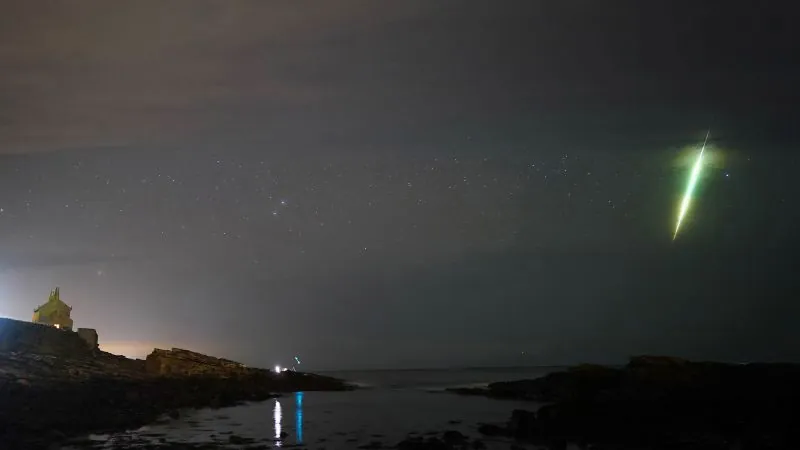
How to Catch the Spectacular Draconid Meteor Shower This Week
2024-10-07
Author: Ken Lee
How to Catch the Spectacular Draconid Meteor Shower This Week
Get ready to look up! The elusive Draconid meteor shower is making its annual appearance, with the best time to see it peaking on Monday evening and continuing into the early hours of Tuesday.
Unlike many other meteor showers that often require late-night vigil, the Draconids are best viewed soon after sunset and throughout the evening. This year, the moon will be only 27% illuminated, allowing for even clearer visibility of these faint meteors.
Expect a serene experience with roughly 10 meteors visible per hour. Mark your calendars: the peak is forecasted for 11 p.m. ET on Monday.
Why are we seeing these shooting stars? Meteor showers occur when Earth passes through a trail of debris left by comets and asteroids. The Draconids originate from Earth crossing paths with the comet 21P/Giacobini-Zinner every October. Named after the constellation Draco the Dragon, where these meteors seem to emerge, the Draconids are also known as Giacobinids, honoring the comet's discoverer, Michel Giacobini, who found it in 1900.
While often described as a "sleepy" meteor shower, the Draconids can surprise stargazers with intense meteor storms when the conditions are just right. Historically, major outbursts have occurred in 1933, 1946, and 2011, with reports of up to 600 meteors per hour. The last significant display occurred during the comet's last close approach to Earth in September 2018, but keep your eyes peeled for an unexpected burst this year!
However, viewers in the Southern Hemisphere might find it challenging to catch the show, as the Draco constellation remains low on the horizon.
To maximize your viewing experience, it is best to find a dark area away from artificial lighting. Setting up a reclining lawn chair or lying back on a blanket offers a great perspective. If you’re in an urban area, consider a short drive to the countryside for optimal visibility—as noted by NASA, you could potentially see three times as many meteors that way.
Don’t forget your camera! Capturing this meteor shower can be a thrilling opportunity for time-lapse videos and long-exposure shots.
What’s Next in the Night Sky?
As a bonus, the next full moon, the Hunter's Moon, will rise on October 17, and will be the closest supermoon of the year at a mere 222,095 miles (357,428 kilometers) away. Here are some more celestial events on the horizon to look forward to:
- **Orionids**: Peak on October 20-21
- **Southern Taurids**: Peak on November 4-5
- **Northern Taurids**: Peak on November 11-12
- **Leonids**: Peak on November 17-18
- **Geminids**: Peak on December 13-14
Don’t miss out on this chance to experience the beauty of the cosmos—grab your family and friends, find a cozy spot, and indulge in the magic of the Draconid meteor shower!

 Brasil (PT)
Brasil (PT)
 Canada (EN)
Canada (EN)
 Chile (ES)
Chile (ES)
 España (ES)
España (ES)
 France (FR)
France (FR)
 Hong Kong (EN)
Hong Kong (EN)
 Italia (IT)
Italia (IT)
 日本 (JA)
日本 (JA)
 Magyarország (HU)
Magyarország (HU)
 Norge (NO)
Norge (NO)
 Polska (PL)
Polska (PL)
 Schweiz (DE)
Schweiz (DE)
 Singapore (EN)
Singapore (EN)
 Sverige (SV)
Sverige (SV)
 Suomi (FI)
Suomi (FI)
 Türkiye (TR)
Türkiye (TR)